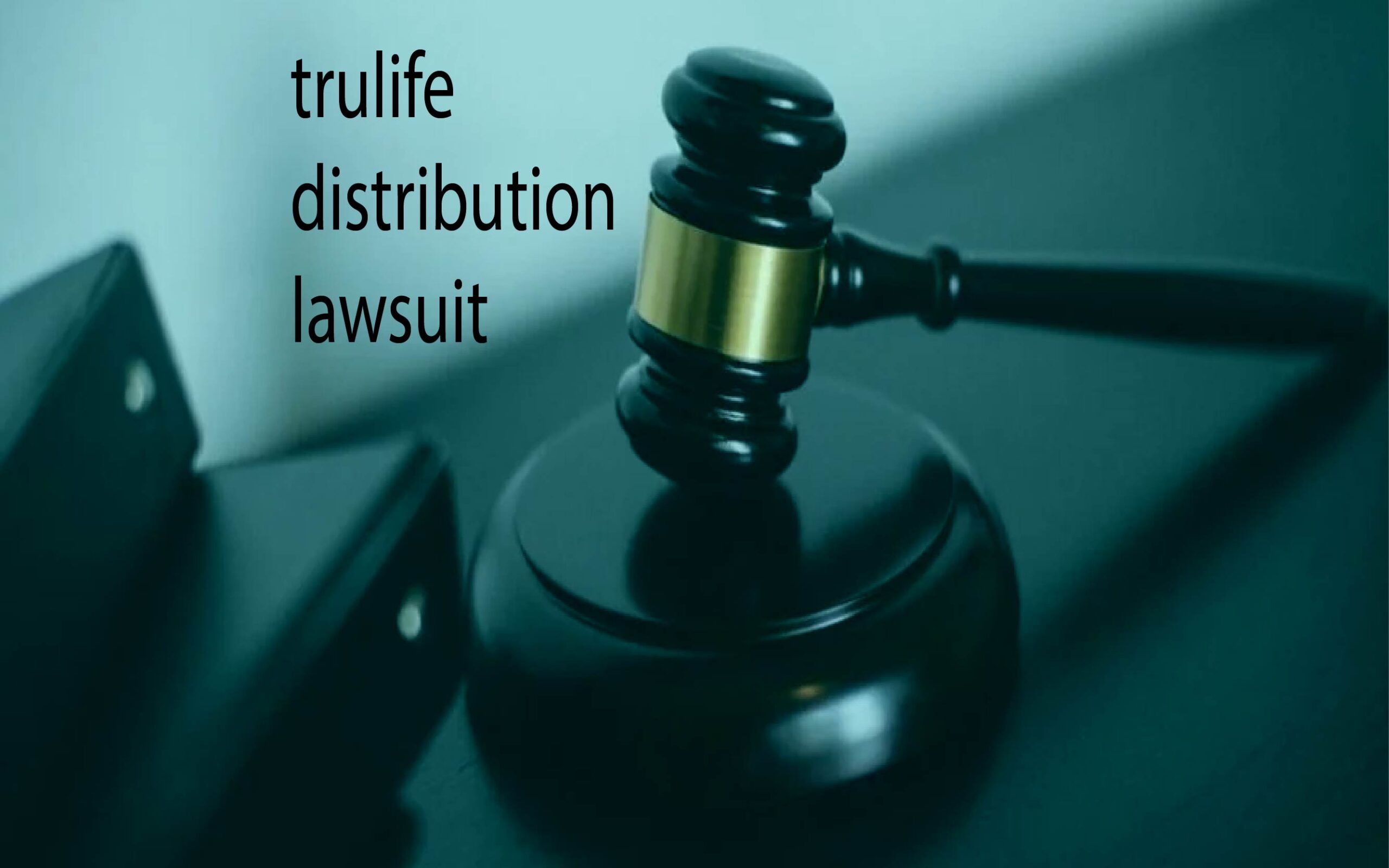Because of its major claims which center on fraud, dishonest trade practices, and fraudulent advertising the TruLife Distribution lawsuit has attracted a lot of interest. Reflecting continuing tensions and disagreements among players, the case exposes more fundamental problems inside the health and wellness sector. This paper seeks to give a thorough summary of the litigation together with an analysis of its causes, main participants, claims, industry effects, etc.
Background of TruLife Distribution
One company focusing on health and wellness items is TruLife Distribution. Although the company has positioned itself as a major participant in this competitive sector, internal strife has lately erupted and resulted in legal disputes. Examining the company’s operations and marketing strategies now reveals possible differences between their stated promises and real product performance.
The Allegations
The complaint against TruLife Distribution brings several grave accusations:
Fraud
The plaintiffs claim TruLife Distribution used dishonest methods meant to deceive customers about the potency of its goods. This can entail fabricating assertions regarding the components used, the advantages claimed, or the projected outcomes from applying these goods. Such dishonest activity not only distorts the quality of the products but also jeopardizes consumer health since people could decide what to buy depending on false knowledge.
Deceptive Trade Practices
Allegations of dishonest trade practices point to TruLife’s possible use of unethical tactics to obtain a competitive advantage in the health and wellness sector. These behaviors could include deceptive advertising techniques, such as missing important information on product safety or efficacy, or non-compliance with accepted regulatory criteria controlling marketing in this industry. Such acts can result in an unfair market when honest businesses fight to compete against unethical behavior.
False Advertising
The plaintiffs contend that TruLife engaged in misleading advertising by making exaggerated or unfounded promises concerning its goods. This includes pushing goods with claims lacking scientific backing or credible data, therefore fooling consumers into thinking they are getting better goods. Such acts not only mislead consumers but also damage confidence in the health and wellness sector as a whole since some people may start dubious of all items sold in this field due to false promises of some companies.
Key Players Involved
Among the various important players in the litigation are:
TruLife Distribution Executives
TruLife Distribution’s executives are under investigation for their part in the claimed dishonest behaviors. The complaint revolves mostly around their choices of marketing plans, product claims, and general corporate ethics. Whether the business deliberately participated in dishonest behavior and how the leadership affected the operations and message of the business would depend mostly on their responsibility.
Plaintiffs
The case’s plaintiffs include maybe former workers who saw unethical activity as well as consumers who feel the company’s actions misled them. Establishing a story of dishonesty depends critically on their testimony and their knowledge. The plaintiffs hope to hold TruLife responsible for its claimed misbehavior and show the effects of its activities on people by sharing their tales.
Legal Representatives
To negotiate the complexity of this matter, both sides have assigned legal teams. Arguing their innocence or supporting their marketing methods, the TruLife Distribution legal representatives will protect the business from the accusations. Emphasizing the evidence and testimony acquired, the plaintiffs’ lawyers will endeavor to create a strong case against TruLife. The strength of their arguments, the validity of their evidence, and how successfully they can present their respective cases before the court will greatly affect the result of the lawsuit.
The Legal Process
In this situation, the legal procedure consists of various phases:
Filing of the Lawsuit
Officially claiming violations of consumer protection laws, the action was filed in the U.S. District Court. The legal battle, in which the plaintiffs list their complaints against TruLife Distribution, starts at this level. The lawsuit establishes the framework within which the matter will develop and comprises thorough allegations that set the stage for later legal procedures.
Discovery Phase
Both sides compile data to bolster their different points of view during the discovery phase. This covers gathering emails, paperwork, financial records, and witness comments. Building a strong case depends on the discovery process since it lets both sides find evidence possibly crucial in deciding the course of action. Using the gathered data, both sides will organize their cases for a trial.
Pre-Trial Motions
To address particular problems before the trial starts, legal representation may file several pre-trial motions. These motions can be requests for dismissals, when one party tries to have the case thrown out depending on legal grounds, or motions for summary judgment, contending that there are no real questions of substantial fact calling for a trial. Pre-trial motions are quite important in determining the direction of the trial and could result in early settlements of some of the issues of the case.
Trial
Should the matter go to trial, each side will make its case before a jury or judge. They will show proof, call witnesses, and argue legally in this phase to bolster their claims. The trial is a crucial phase since the success of the legal techniques used by both sides as well as the quality of the evidence and testimony given will mostly determine the result.
Post-Trial Actions
Should either side feel there were legal mistakes or if they disagree with the conclusion of the trial, they may decide to appeal the result. Parties may also try to settle the disagreement outside of the appeals process by means of settlements. Should appeals be sought, post-trial activities might greatly affect the case’s ultimate resolution and might extend the legal conflict.
Implications for the Health and Wellness Industry
The health and wellness sector suffers more general consequences from the TruLife Distribution lawsuit:
Consumer Trust
Trust in health and wellness products could fade as consumers grow more conscious of such dishonest methods. This loss of confidence can cause customers to examine advertisements more attentively and result in increasing doubt about product claims. Consumers looking for guarantees about the validity and efficiency of the things they buy will make openness in marketing and product information a top priority. Companies that lose credibility could find it difficult to keep their customer base.
Regulatory Scrutiny
The case might force authorities to look closer at the operations of like businesses. Given the claims against TruLife Distribution, regulatory authorities may be more closely examining to guarantee adherence to consumer protection rules. This increased control could result in tougher rules meant to shield consumers from dishonest behavior, therefore influencing the marketing and sales strategy for wellness and health products. Businesses could have to move with the times by improving their compliance policies and making sure their advertising campaigns satisfy legal criteria.
Impact on Competitors
Rivals in the health and wellness sector could suffer from this litigation since the outcome of the matter could affect public opinion all across the sector. Businesses could be under more pressure to show that their marketing policies and product claims are honest in order to be free from claims of fraud or dishonesty. As companies try to restore customer confidence and set themselves apart from those under legal issues, this could cause a move toward more open and honest marketing techniques. Eventually, the case could help to improve industry norms and procedures.
Future Outlook
The industry will be keeping a careful eye as the TruLife Distribution litigation develops. The result of the case could create significant guidelines for the operations of wellness and health businesses. The practices of stakeholders could have to change to fit changing customer expectations and legal requirements.
Conclusion
The TruLife Distribution lawsuit reminds us very much of the need for integrity and openness in the field of health and wellness. The claims of fraud, dishonest behavior, and false advertising draw attention to the possible fallout from misleading consumers. The corporation and the sector as a whole will have to consider these problems and strive for consumer confidence restoration as the legal struggle advances.
As a result, this continuous state of affairs will surely affect the direction of the health and wellness sector, impacting the way businesses engage with customers and present their products. Stakeholders have to be alert and dedicated to moral behavior if we are to guarantee a better, more open market.




